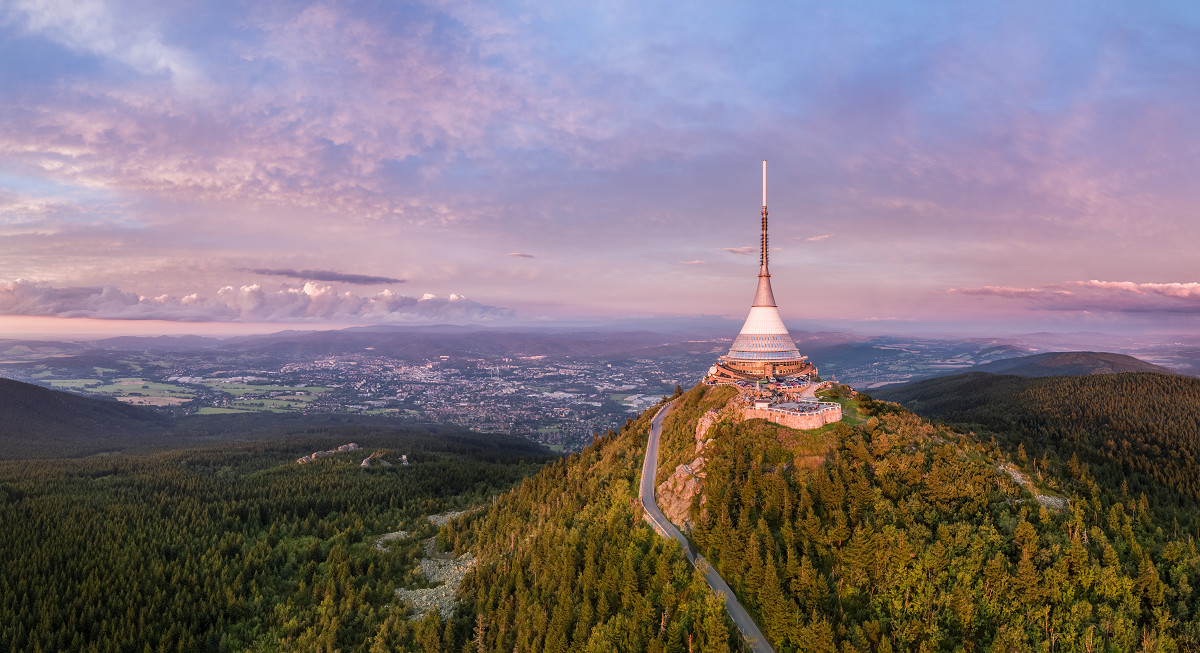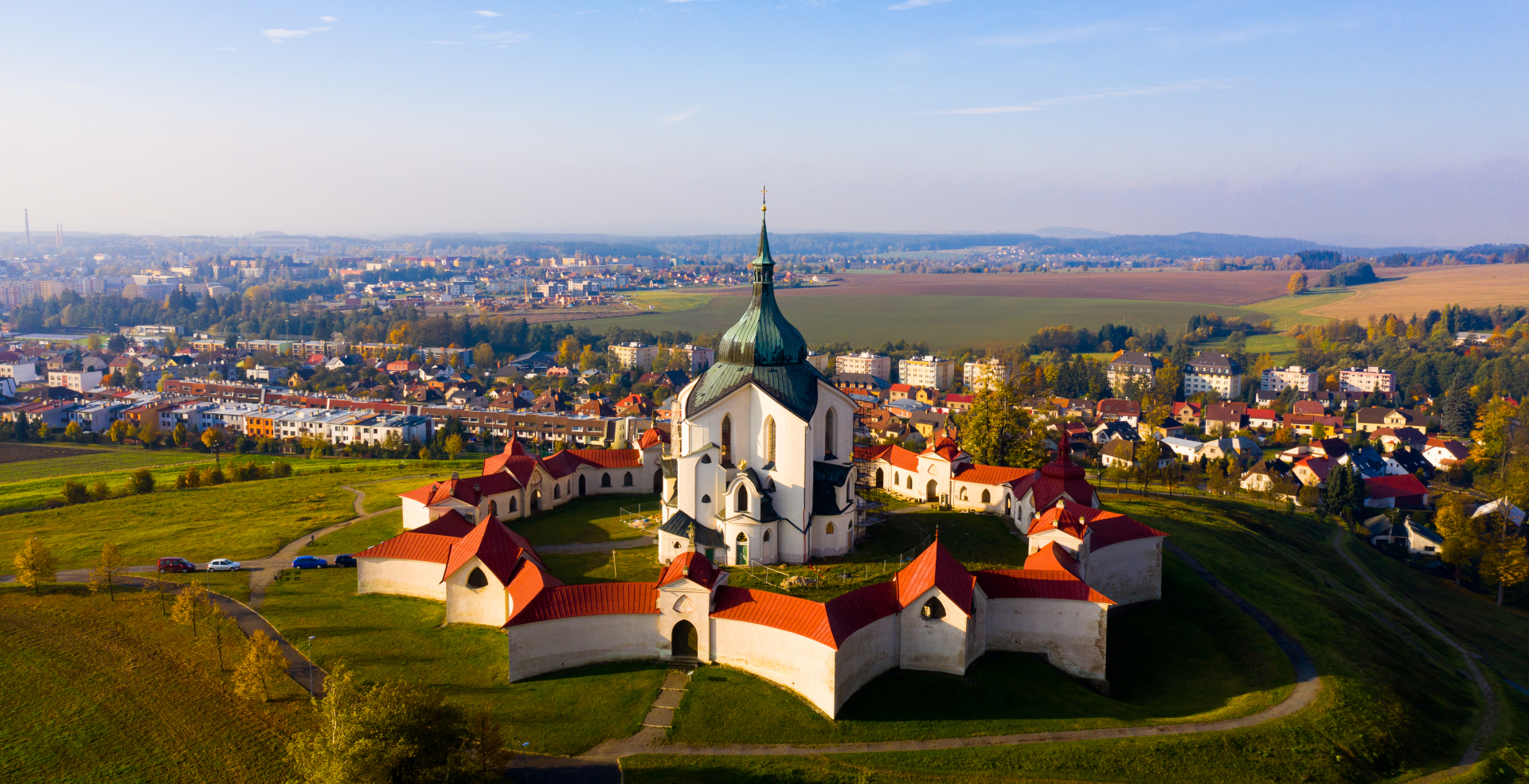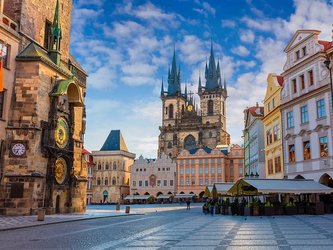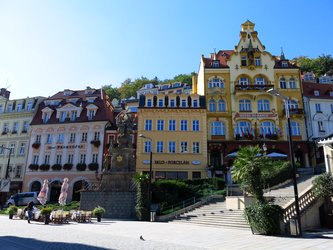
Czech Republic: General Information
Welcome to the Czech Republic!
First, some curiosities
Did you know that the Czech Republic gave the world the word "robot" (first used in Karel Čapek's play R.U.R.), soft contact lenses (invented by Professor O. Wichterle in 1961), the remoska – a portable electric oven (made in 1957 at the Remos factory), and the sugar cube (produced at the Dačice refinery in 1841)? And do you know what a foreigner most often associates with the Czech Republic? You will generally hear "Havel", "Jágr", "Škoda". However, it would be a shame not to mention other famous Czech personalities who gained recognition far beyond the borders. Among them are, for example, composer A. Dvořák (New World Symphony), psychologist Z. Freud, architect A. Loos, artists A. Mucha and Toyen, director M. Forman (One Flew Over the Cuckoo’s Nest, the musical Hair, Amadeus), and among current personalities, opera singer M. Kožená and climber A. Ondra. It is also worth mentioning former supermodels T. Maxová and E. Herzigová, among others. Among the products that have made a name for themselves worldwide are Czech glass Moser, Baťa brand shoes, and Becherovka herbal liqueur (formerly used as a remedy to aid digestion). If we also take into account the natural beauty, the unusual number of monuments listed on the UNESCO World Heritage list, the omnipresent castles and palaces, and the numerous spa resorts, the Czech Republic, despite its modest size, has a lot to offer!
Some basic facts about the Czech Republic
- The capital: Prague
- Area: with a territory of 78,866 km², it ranks among the medium-sized European countries, comparable to countries such as Austria or Ireland; it is 3 times smaller than Great Britain
- The country is divided into 3 historical regions: Bohemia, Moravia and Silesia
- It borders Germany to the west, Poland to the north, Slovakia to the east and Austria to the south
- Population: 10.9 million (in 2024)
- Language: Czech
- Currency: Czech crown
- Climate: continental
- President: Petr Pavel (since March 2023)
- Flag: tricolour, blue, white and red. It was officially adopted in 1920, some time after the declaration of independence of the Czechoslovak Republic. To the two traditional Slavic colours was added a blue corner on the side of the mast, a colour which had been gradually associated with the other two in the 19th century in the midst of the "pan-Slavism" movement. In 1993, at the time of the separation from Slovakia, the Czech Republic inherited the flag.
- National Anthem: Kde domov můj? (Where is my home?). It was composed in the first half of the 19th century by František Škroup for a musical by Josef Kajetán Tyl, which was very popular at the time.
Political system
- Regime: multi-party parliamentary democracy with a central position of the parliament
- Constitution: adopted in December 1992 by the then Czech National Council
-
Institutions :
- Chamber of Deputies: 200 deputies elected for 4 years by proportional representation
- Senate: 81 senators elected for 6 years, renewable by thirds every 2 years
- President of the Republic: Head of State and Head of the Armed Forces, elected for 5 years by direct universal suffrage. Officially head of state, his power is limited. The President appoints the Prime Minister, the members of the Supreme Court and the Constitutional Court and has a veto on proposed legislation.
- Government: the government is formed by the Prime Minister and is responsible to the Chamber of Deputies.
The Czech Republic has been a member of the European Union since 1 May 2004. However, it is not yet a member of the Eurozone.
It joined the NATO collective security system in 1999.
Main cities
The capital, Prague, is the largest Czech city in terms of area and population.
Other important cities: Plzeň in the west, Brno in the southeast, Ostrava and Olomouc in the east.
Administrative division of the country
The Czech Republic is divided into 14 administrative regions, one of which is formed by the capital Prague. The largest region, Central Bohemia, surrounds it on all sides.

Landforms and landscapes
The Czech Republic is a hilly country, almost entirely surrounded by mountain ranges. They mark the historical borders of the Bohemian Kingdom.
The most important of these are: the Ore Mountains (Krušné hory) in the northwest; the Jeseníky and Giant Mountains (Krkonoše) in the north, where the highest point of the country is located, Sněžka or “Snow Mountain” (1,602 m); the Šumava range in the southwest; the border with Slovakia follows the axis of the White Carpathians.
In the interior of the country there are two vast plains, important for the country’s agriculture - one along the Elbe River, the other in South Moravia.
Natural heritage of the country
The Czech Republic has much to offer hikers, cross-country skiers, nature lovers and castle enthusiasts. It offers:
-
26 protected natural areas (known in Czech as CHKO), including 6 UNESCO biosphere reserves:
- The Šumava Mountain Range, often called the “green roof of Europe”
- Krkonoše (or Giant Mountains)
- The Křivoklát region
- The Třeboň region
- The White Carpathians
- Pálava
- 4 national parks
- mountains that are not as high as in France or Austria, but are omnipresent
- ponds and lakes, especially in South Bohemia

Architectural and cultural heritage
The Czech Republic has a rich architectural heritage with many historic towns with preserved centres and countless castles and chateaus throughout the country that are open to the public. In a relatively small area, it has one of the highest concentrations of UNESCO listed monuments in Europe.
UNESCO World Heritage monuments and historic centres:
Prague and its surroundings:
- historical centre of Prague
- the historical centre of Kutná Hora
Eastern Bohemia:
- Renaissance castle of Litomyšl
- National stud farm in Kladruby nad Labem
Western Bohemia:
- spa triangle – Karlovy Vary, Mariánské Lázně, Františkovy Lázně
Northern Bohemia:
South Bohemia:
- historical centre of Telč
- historical centre of Český Krumlov
- village of Holašovice and its unique ensemble of farms and buildings in the so-called "rural baroque" style (selské baroko)
Moravia:
- Mies Van de Rohe’s Villa Tugendhat in Brno
- Lednice-Valtice landscape complex and the respective castles
- Archiepiscopal Castle and Gardens in Kroměříž
- Holy Trinity Column in Olomouc
- Romanesque Basilica of St. Procopius and the Jewish Quarter of Třebíč
Vysočina:
- Church of St John Nepomuk on the Green Mountain in Žďár nad Sázavou
Intangible cultural heritage
- verbuňk – a male folk dance found in Moravian Slovakia (Slovácko)
- the Mardi Gras masquerade procession in the region of East Bohemia
- falconry
- Ride of the Kings in South East Moravia
- puppets
- blueprint – resist block printing and indigo dyeing, a technique which shows white motifs on a blue background
- Christmas glass bead
- handmade glass production
- timber rafting
You may also like



